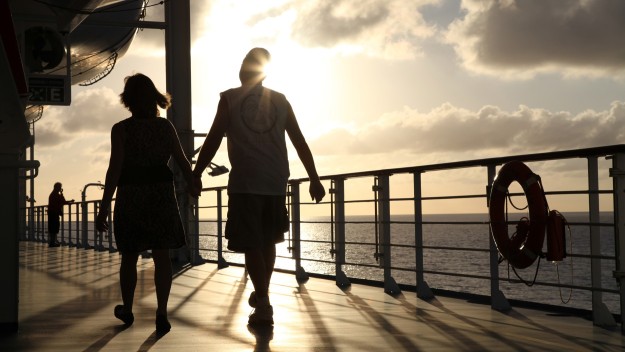It is hard for me to believe that, for most of my life, I never knew about her. I mean, I had a solid grade school experience. I made good friends who legitimately cared about me. I took wonderful intellectually stimulating courses in college and spent much time after graduation traveling on buses throughout East Africa. Yet something was missing. During those quiet moments, those times of reflection that are had when things slow down enough to where you are conscious of life’s big picture, I often realized that some piece of me was not yet fulfilled.
And then I met her: peer to peer lending. She graced into the room with the silence and majesty of a comet, awash in life and honesty, and suddenly everything changed. Sunshine became brighter and the moon grew fuller. These days I continuously seem to hear, wherever I go, the gentle tinkling of note repayments landing back in my account.
But I get ahead of myself; things have not always been so pristine. A decade went by with me lost in that lonely investing wilderness. Alas, in order to fully describe how I came to be in this place of joy today, I first need to give a little background about how it all started.
A Healthy Financial Upbringing
I was born in a family that valued financial transparency. I can recall my mother and father sitting down together in our dining room for one of their yearly financial discussions. The terminology I kept hearing was difficult for me to understand. After all, I was far more interested in TV shows like Saved by the Bell than this Earned Income Tax Credit stuff. And yet I remember how much openness and communication my parents possessed regarding finances. I remember how each of them asserted their opinion while also being open to the other person involved. With three children on the line and a mortgage to repay, the stakes were somewhat high, but you would have barely noticed. Money was not really a topic of stress in my family, but it was one of focus, and this balance had an early impact on me as a child.
I quickly realized, in my mid-teens, that I could take extra money I had and find ways to make it grow. Usually these were innocent, like going to garage sales in the newspaper to find old grungy Atari 2600 consoles. It was amazing how much people on eBay would pay for an Atari after it was cleaned up and nicely presented, and I remember my father laughing at my new-found hobby.
The Playstation 2 Bonanza
 Sometimes things got a little more exciting. The most dramatic example of my early love of investing came at the release of the Sony Playstation 2 (PS2). Unlike most earlier video game systems, the PS2 could play DVDs, and cost about the same as a standalone DVD player back then. So people who played video games wanted one, and people who wanted a DVD player wanted one as well. Six of my friends and me camped out in front of our local department store overnight to buy them, promptly reselling them on eBay the next day. Hilariously, Sony had manufacturing problems, so the stores did not have enough to sell, and this meant our eBay auctions went crazy. It was a pretty remarkable feeling to pony up $600 (for two PS2s) and get back $1200 overnight, especially for a punk high schooler. I remember how we kept hitting the refresh button on Internet Explorer, watching that auction climb higher and higher. My friends and I just kept looking at each other in disbelief and laughing.
Sometimes things got a little more exciting. The most dramatic example of my early love of investing came at the release of the Sony Playstation 2 (PS2). Unlike most earlier video game systems, the PS2 could play DVDs, and cost about the same as a standalone DVD player back then. So people who played video games wanted one, and people who wanted a DVD player wanted one as well. Six of my friends and me camped out in front of our local department store overnight to buy them, promptly reselling them on eBay the next day. Hilariously, Sony had manufacturing problems, so the stores did not have enough to sell, and this meant our eBay auctions went crazy. It was a pretty remarkable feeling to pony up $600 (for two PS2s) and get back $1200 overnight, especially for a punk high schooler. I remember how we kept hitting the refresh button on Internet Explorer, watching that auction climb higher and higher. My friends and I just kept looking at each other in disbelief and laughing.
Yet, despite random moments like the Playstation 2 launch, I did not have much of an opportunity to explore putting my excess cash to work for me. For most of my early life, I was barely able to pay rent. What I did have in spades, however, was a desire to connect with the world’s brokenness.
The Sobriety of Global Poverty
It was numerous experiences in impoverished places in the United States that taught me how it is better to give than to receive, and that our day to day decisions can make a big difference in the lives of others. I can remember fixing roofs on my college Spring break for impoverished families in Mississippi, the poorest state in America. I can remember handing out food and blankets to poor Native American families in Gallup, New Mexico, a city with the highest alcoholism per capita in the United States.
Everything changed, however, the year I packed my suitcase and moved to Nairobi, Kenya. I had been accepted for a graduate school program in theology, but in honestly I had come to experience Africa. Experience it, I did. Within months of arriving I was in Sudan doing aid work with GOAL (an Irish NGO). During my first year, Kenya experienced its worst drought in a decade, and I went to distribute food to stricken areas in the north, an experience that left me sober with the global reality of hunger and instability. I spent three years in East Africa, three of the most formative years of my life thus far.

Who knew that such wonderful people were in such difficult circumstances, and that I had the ability to make a dramatic impact upon their lives through such little effort?
Why am I talking about humanitarian work on an investing website? Because seeing the world’s poverty taught me a very important thing: that life is most meaningful when it is lived in service to others. Altruism became an anthem for me, and it is with this theme that I began to explore how to put my savings to work later in my twenties. What I found, with a bit of research, was that multitudes of people had already been asking that same question: how can we invest our excess cash and retirement funds in a way that makes the world better? Joining that conversation was how I discovered socially-responsible investing, and how I eventually found the love of my (financial) life: peer to peer lending.
The journey continues in part 2.
[image credit: Samantha Beddoes ‘Romance on the Seas!‘ CC-BY 2.0
Qurren ‘SCPH-30000 vertical‘ CC-BY-SA 3.0]

Wow. You’re awesome. I’m sharing this article with my spouse and teens this evening. Thanks so much.
nice, especially to read it on father’s day….